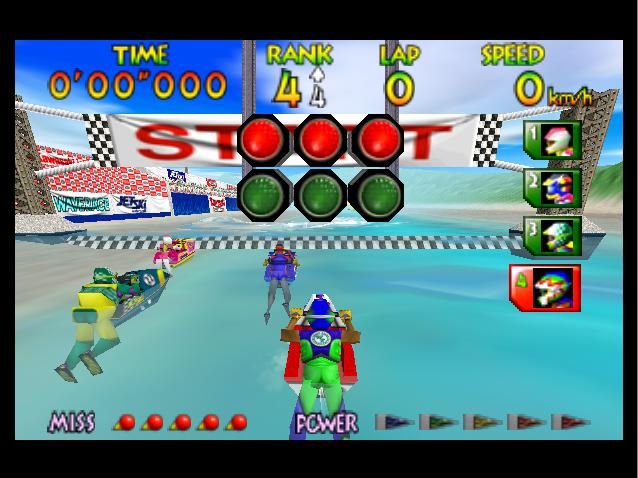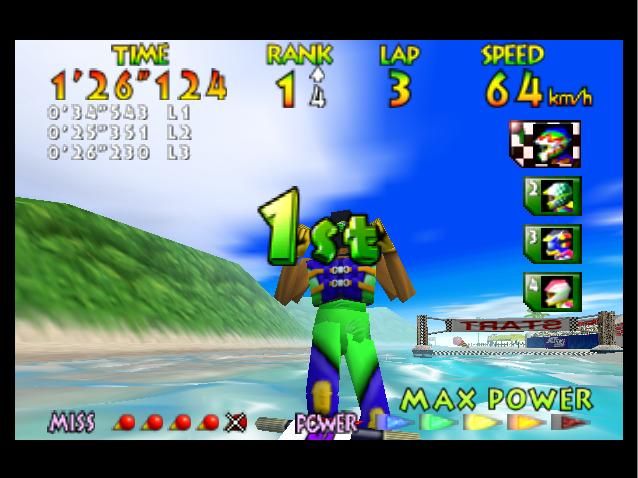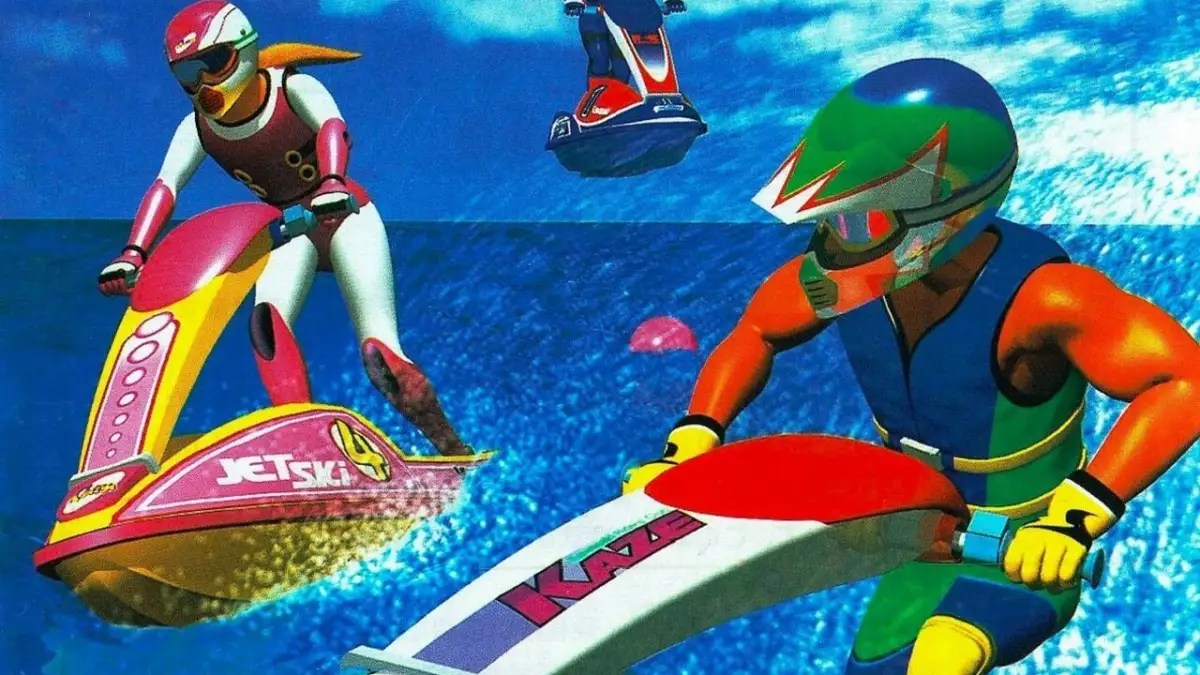The mid-to-late ‘90s had this way of going all in on over-the-top design choices. Whether it was the high-octane advertising for drinks like Hi-C and Capri Sun, the hyper-designed NBA jerseys boasting loud cartoon mascots, or the beautifully ugly artistic design from Klasky Csupo animation, choices were certainly made. And those choices were made with definitive punctuation.
Sure, the folks who weren’t coming into consciousness during this era of pure loudness might argue a lot of these choices were made for the worse. But as a Nick-watching, Raptors shirt-wearing 8-year-old with no taste, I thought that all those bright colors, bold flavors, and in-your-face choices were all that. It’s no wonder that when Wave Race 64 came out, I was hooked pretty much immediately.
Wave Race 64 was one of the first titles to grace the Nintendo 64 and to this day remains one of the platform’s crown jewels. Its water mechanics were revolutionary in the 3D gaming space, and things like wave patterns or weather effects could have radical alterations on how players would approach a race. Similarly, players could customize their craft, selecting weight and handling specifications that would further alter how they performed in the water.
Yet while the game is a technical marvel for the era, Wave Race 64 is also a game that is proudly sponsored by Kawasaki Jet Skis in an era where extreme sports were entering their prime. The game was just as renowned for its rockin’ synth guitar soundtrack composed by Kazumi Totaka, with tracks ranging from full-on ‘80s pop rock for the game’s sunny beach levels, to grunge and metal bangers on the rough water raceways.

And if that weren’t rad enough, Wave Race 64 also offered a deep tricks mode, multi-colored jet skis, and character wetsuits that clearly took inspiration from those blue and purple Jazz cups, not to mention a cheat code that let players ride a literal dolphin. These all were a dope glaze on a well-designed game cake.
At its core, Wave Race 64 was unapologetic in its embrace of its over-the-top, sometimes absurdist radness. So it’s not a huge surprise that Wave Race received a sequel on the GameCube, Wave Race: Blue Storm. The game doubled down on something its predecessor did so well, this time with early 2000s-era music and updated iconography of what was rad then. But while Wave Race 64 wore its rockin’ sounds and flamboyant theming as a sort of cheesy badge of glee, Blue Storm’s approach felt more canned when it came to its cool factor.
Its characters boasted hip puffy vests, backwards caps, and overly large sunglasses, but it all felt a bit like a late-era MTV music video wardrobe. The soundtrack was good but delved more heavily into punk rock songs that feel like a duty-free version of one of the iconic Tony Hawk soundtracks. And anytime a player navigated around enough buoys for a turbo, there was a loud frontman “YEAHHH” shout that felt thrilling the first time but less so when delivered for the 20th time in two minutes.

This is all a bit harsh on Blue Storm. It’s still fun to revisit and has some great graphics and water mechanics. But at the end of the day, so many of its choices felt workshopped. Where Wave Race 64’s cool factor felt so natural and jubilant, Blue Storm felt more like rad product placement.
Another factor that makes Wave Race 64 so special is that the game gives more than just one genre of coolness to connect with. Sure, I connected to its ‘90s moments most, but the game hardly holds itself to a single period of time.
For example, songs like Twilight City’s theme feel more like a Boz Scaggs ‘70s jam session, while the song from the Options menu goes back even further, pulling in some ‘60s Stevie Wonder-style harmonica. Some levels like the foggy Drake Lake and the icy, secluded Glacier Lake give a moment to take in a deep breath of more natural environments, giving some pacing. Wave Race 64 celebrates radness, but it also knows when to quit screaming “YEAHHH” at players by knowing when to pause those shredding guitar riffs and ‘90s beach parties.
While Wave Race 64 lured me in with its nods to the ‘90s, it’s the game’s ability to embrace radness on a more personal level that has kept me and countless others coming back to take a ride on its many impressively generated waves. Because doing a flip on a jet ski or riding a dolphin to a synthy keyboard is inherently rad. And so is the joy that doing those things brings.






Published: Mar 15, 2023 07:47 pm